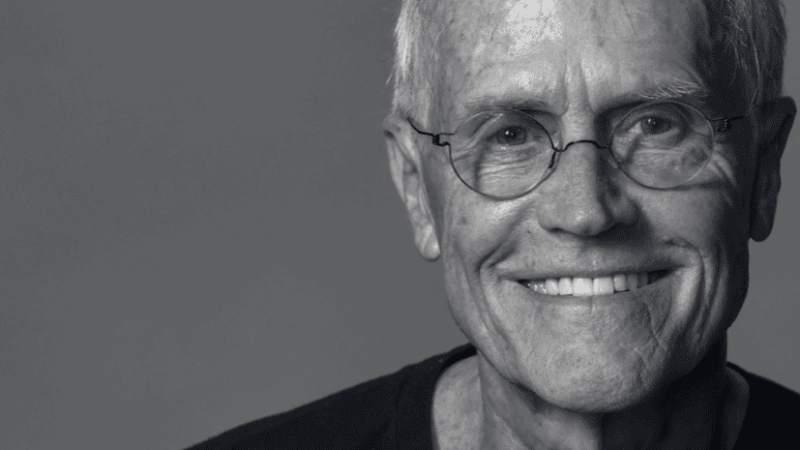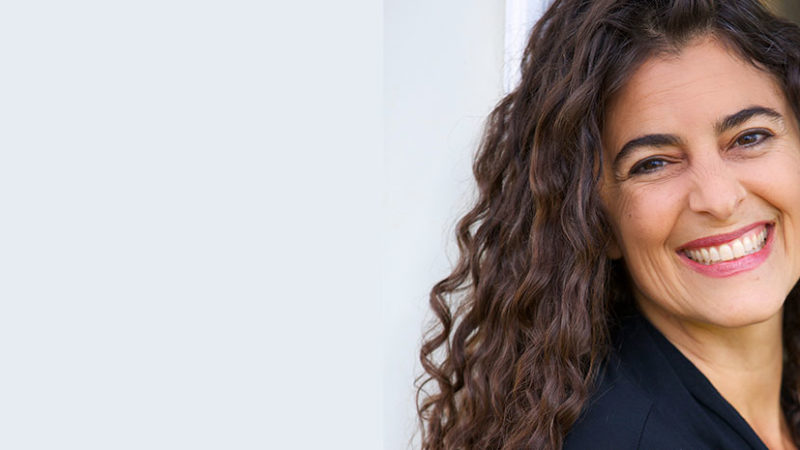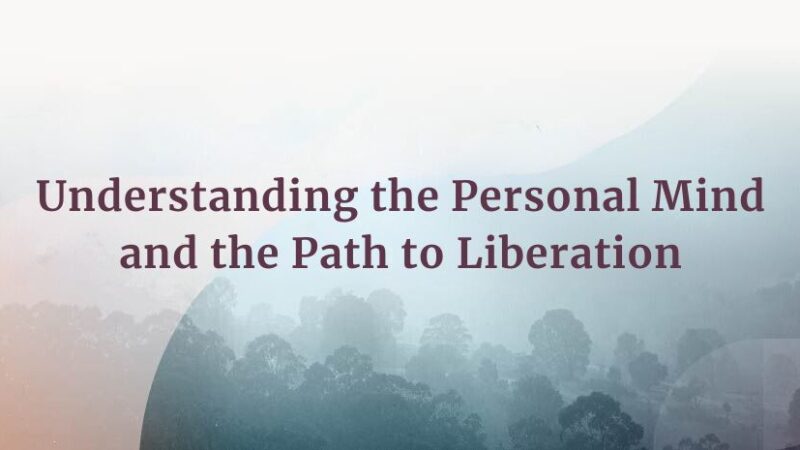6 Principles for Befriending Yourself: Part I

Enjoy this excerpt in our new mini-series of Befriending Yourself, written by Jeff Foster and Matt Licata. Want to go deeper? Join their free webinar on Wednesday, June 5! Be sure to register here.
“I wish I could show you when you are lonely or in darkness the astonishing light of your own being.” – Hafiz
Here’s the honest truth: Sometimes, no matter how much healing, spiritual, and therapeutic work we’ve done on ourselves, we just feel stuck, blocked, triggered, defeated, or tired. We feel separate from life, far from where we “want to be,” or think we “should” be. Our usual default or habit is to go to war with ourselves in some way. We run from the present moment and life becomes a battleground. And we end up exhausted – physically, emotionally, and spiritually. How can we call off the inner war?
We want to invite you to slow down and tune into the alchemical medicine contained within your difficult thoughts and feelings and other “unwanted” states and experiences. To step off the battlefield with life and open to the guidance buried inside you, exactly as you are, now. This guidance is already here, not the product of some exhausting search. Life, or love, is not waiting for you to heal, awaken, or transform. What you seek is here now, unfolding and disclosing itself, and can always be found in the very core of where we have most forgotten to look.
THE DISCOVERY OF THE SACRED MIDDLE
We can so easily forget about the sacred “alchemical middle,” an alternative to repression or unconscious expression, which is available in every moment; a new and creative pathway in between the primordial pathways of fight-flight-freeze: The invitation to be present with the difficult material. Breathe into it. Infuse it with curiosity and love. This is our true route to healing, if we are ready to let go of our suffering.
Here is a principle that has the potential to change your life, if you really take it in:
TRUE HEALING HAS NOTHING TO DO WITH GETTING RID OF “NEGATIVE” THOUGHTS AND FEELINGS. TRUE HEALING HAPPENS WHEN WE ACTUALLY STOP “TRYING” TO HEAL ALTOGETHER, LET GO OF “HEALING” AS A DESTINATION, AND SURRENDER TO THE PRESENT MOMENT OF LIFE, HOWEVER INTENSE OR UNCOMFORTABLE IT IS. THERE IS UNEXPECTED MEDICINE HIDDEN INSIDE THIS “ALCHEMICAL MIDDLE,” THE WISDOM OF YOUR OWN HEART, RELEASED WHEN YOU TURN BACK TOWARD YOURSELF IN A MOMENT WHEN YOU NEED YOURSELF MORE THAN EVER.
We want to help you stop struggling against life and truly “befriend” yourself, love and care for yourself – even in a moment when you really want to escape, when you have been caught in habitual and addictive ways of responding, and the trance of judgement, unworthiness, and self-abandonment has taken you over.
We want to show you that even your deepest shame, longings, sorrows, and loneliness are not mistakes, and not “blocks” to freedom and peace at all, but actually forgotten and misunderstood doorways or portals into the life that you long to live.
As Joseph Campbell said, “… in the cave you fear to enter, lies the treasure you seek.” Sometimes we have to allow ourselves to feel worse, to bravely touch into the darkness and “negativity” of the moment, in order to find the light, in order to remember our true strength, and get “better.” This is the law of “paradoxical intention,” a concept introduced by psychiatrist Viktor Frankl. The great alchemists and tantric practitioners of the past also discovered potent medicine buried in the very core of our most difficult emotional states. In order to tap into this wisdom and bring it into our lives and the world, we have to turn towards the uncomfortable place, however counterintuitive that sounds – surround and infuse it with our curiosity, attention, love, interest and care, and allow it to disclose its mysteries.
Here is Part I in our Mini-Series of some effective pathways into befriending…
THE SIX PRINCIPLES
- STOP TRYING TO BE HAPPY (happiness is not something you can “do”)
There is so much pressure on us these days from society – our friends, family members, social media, and even self-help authors and spiritual teachers – to be “happy,” to be “up,” to be joyful, to be at peace and to have everything “together.” It can be so exhausting, this journey of “becoming”… and especially “becoming happy.”
Happiness is one state among many, one band or flavor of the spectrum of our humanness, a lovely experience, but if we become entranced with it, if we become addicted to it, we lose touch with the other shades of the spectrum, where profound creativity, realization, and insights may also dwell. If our journey to happiness entails a subtle denial of these other shades, we send parts and pieces of ourselves into the shadow where they will inevitably return (especially in our relationships) in less-than-conscious ways, generating unnecessary suffering for ourselves and others.
We unconsciously seek this kind of one-sided “happiness,” that sense that everything is “up” all the time, clear, free of doubt, certain, sure, positive. But it’s a concept that hurts us in the end, an impossible ideal that actually takes us away from ourselves and makes us distrust our “authentic unhappiness.” We forget the wisdom in our “shadow,” that which is hidden in the core of our wounds, in those places we’d least expect to find it. But to learn to trust our deepest experience will go against the grain of a culture and society that have lost contact with the wisdom in the unwanted. It requires a reorganization of our perception and nervous system, and training ourselves to rest and explore and open to the unknown, into unstructured states of being, which is always going to feel a bit risky, shaky, and yet also full of life.
The truth is that we simply aren’t meant to feel happy, inspired, joyful, and full of energy all of the time. We aren’t meant to be “up” all the time, or even most of the time! It’s so exhausting trying to stay in any particular state. It’s a relief to be allowed to be “down.” Imagine how a dear and trusted friend – a partner, a teacher, a therapist, or even a pet or some friend in the natural world – would just allow you to be down if you felt down, and not fix or judge you or try to make you “up” again, but simply hold you and allow you to cry if you needed to cry. Held in that kind of unconditional love, great healing could emerge. Through the darkness, to the light. This is the power of love.
We are actually built to contain all of life – the sorrow and loneliness and doubt and exhaustion as well as the joy and excitement, just as the sky is “built” to contain all kinds of weather, and just as a movie screen is “built” to allow all kinds of life scenes to pass through it. There is nothing wrong with you if feelings of sorrow and fear and even despair move through you, just as there is nothing wrong with the sky during even the biggest storm. The sky simply allows all of its weather. That is its nature. It doesn’t have to do anything except be what it is. Open, loving and vast.
We are actually meant to feel down – lost, disconnected, sad, and lonely – sometimes! It’s good and healthy to make room in ourselves for this “negative” weather, too – the rain, the snow, the fog, and the thunderstorms as well as the pleasant sunny days. These are also sacred and healthy and even life-giving experiences, and we need to take some time in our day to really allow ourselves to feel whatever it is that what we are feeling, even if everyone around us is calling us “negative” or “broken” and trying to fix us and give us advice… or even “enlighten” us. There are gifts that are important for our journey – experiences, feelings, realizations, insights, and discoveries – that are available in states of doubt, confusion, despair, and grief that are simply not available in higher, brighter, and more certain states. You are vast, a majestic holding field that contains all of life, all of love’s art and creativity. It takes courage to turn from the advice of others, and the advice of our own minds (which is in large part only an expression of past conditioning), and surrender to our genuine present-moment experience. It takes bravery to be authentically as we are, in a world that wants us to be different. Here, in our authenticity, we will find our true happiness – a happiness that is not the opposite of sorrow, a joy that is not at war with darkness.
The deepest longing in your heart will only be met by discovering this true authenticity, inside your own eccentricity and wildness, in your unwillingness to go with the status quo if the price tag of doing so is the abandonment of your one unprecedented heart. It is risky to walk your own path, but there is a very unique gift of creativity inside of you that aches to be allowed into this world, one that is utterly unique and one only you can reveal here.
To be truly happy, you have to be prepared to allow yourself to be truly “unhappy,” however counterintuitive and paradoxical that sounds.
2. TRUE MEDITATION IS NOT WHAT YOU THINK (it’s what you are)
Here is the paradox: when we allow ourselves to be authentically unhappy, to embrace the “negative” aspects of experience, we can actually touch a deeper kind of happiness. The happiness of true self-acceptance, the joy of being exactly what we are. Again, we must embrace this paradox, not try to understand it! As the alchemists remind us, we cannot skip stages, we cannot abandon the moon for the sun or replace one with the other, for the gold we long for is only found in the embrace of both.
Befriending ourselves means giving ourselves a break from the exhausting Self-Improvement Project that so many of us have become tangled up in, and slowing down, taking a few deep breaths, and allowing ourselves to experience the entirety of the present moment without trying to fix or change it, even if it’s uncomfortable or intense or “negative.” To discover for ourselves whether this moment truly needs to be improved, or is somehow already complete. Not the picture or idea of “complete” the mind thinks or has been told it needs or requires, but a completeness of the heart, a wholeness, a vastness that is always already present and will never be found by means of more and more acquisition of material things, concepts, experiences, or insights. The completeness and wholeness of the sky, even in the midst of a storm.
Meditation doesn’t mean working yourself into a blissful, transcendent, or even relaxed state. These (and many other) states may of course come and go as byproducts of meditation and are also welcome and embraced, but they are not the goal. True meditation has no goal, however strange that sounds to the rational mind. Meditation is not even a “practice” really; it’s more of an attitude, a way of relating to the moment, dancing and playing with it, leaning in and leaning out of it. Meditation in the true sense of the word means getting really curious about your present-moment experience instead of trying to alter it, distract yourself from it, or even to cure, shift, transform, or heal it. But to truly inhabit and befriend it. And trust it to the core. To even “trust” in those moments when you cannot trust; to accept those moments you cannot accept. Even in the core of our “non-acceptance” and resistance, our states of doubt and “not being able to trust,” if met in deep embrace, are also doorways to freedom. The goal is not to “shift” or “translate” non-acceptance to acceptance – but to open into the way psyche or soul is appearing now, as valid, workable, and worthy of our compassionate tending.
We can accept that we are in non-acceptance right now. We can trust our doubt. We can experiment with not resisting our resistance. We can allow our non-allowing, and give a big YES to the “No” within. We can allow ourselves to be exactly as we are, the way that beloved friend or pet would allow us.
You could trust the weather, even if you didn’t like it. You might say “this isn’t the weather I had hoped for, or wanted, but I trust that it’s here today, and it will pass in time. But for now, I’m going to walk out into the rain, the fog, the snow, the darkness….” We can find the rain, the fog, the snow, and darkness inside our own bodies and neural pathways, inside the cells of our hearts and nervous systems, along with their friends the sun, the springtime, the warmth, and the flowering, too. Let’s make room for all of the weather, in any given moment of our lives.
Meditation means letting the present moment be as it is, “kindling a light in the darkness”, as Carl Jung put it. Jung also reminded us that we’ll never discover “enlightenment” by “imagining figures of light,” but only by providing sanctuary for the darkness – allowing our repressed fear, the shame, the deep feelings of loneliness and sorrow to emerge into the light of our conscious awareness. In any moment of your life you can simply get curious about what you’re feeling now, what you’re seeing, hearing, smelling, and touching in this very unique instant of your life.
You can “en-lighten” the moment, instead of waiting forever to become enlightened!
Beholding the moment as a work of art, rather than something to fix or mend; this is true meditation – seeing any moment through eyes of curiosity and fascination. And you can always begin where you are. No matter how things are going in your life, you can always begin now.
With the way your feet feel. Your hands. With a sense of pressure between the eyes. With the weight of your clothes on your body. With the rising and falling sensations of the breath. With a feeling of joy or boredom, bliss or confusion. With a sense of numbness or emptiness (yes, you can even get curious about your lack of curiosity!). All states – both sacred and profane – and experiences – both pleasant and unpleasant – are worthy of your curious attention. Meditation means falling in love with where you are, even if where you are is hot and sticky and unpleasant and a bit scary and groundless. Even if you have to begin with falling in love with the part of you that wants to be somewhere else. Even this “weather” is not a mistake. Remember the sky…
We hope you enjoyed this excerpt in our new mini-series of Befriending Yourself, written by Jeff Foster and Matt Licata. Want to go deeper? Join their free webinar on Wednesday, June 5! Be sure to register here.
ABOUT THE AUTHORS
JOIN JEFF FOSTER AND MATT LICATA EACH MONTH IN THEIR NEW “BEFRIENDING YOURSELF” MEMBERSHIP SITE: www.befriendingyourself.com

MATT LICATA
Matt Licata, PhD is a psychotherapist, writer, and independent researcher based in Boulder, Colorado. Over the last 25 years, he has been active in the ongoing dialogue between depth psychological and meditative approaches to emotional healing and spiritual transformation.
His psychotherapy and spiritual counseling practice has specialized in working with yogis, meditators, and seekers of all sorts who have come to a dead-end in their spiritual practice or therapy and are longing for a more embodied, creative, imaginative way to participate in their experience, in relationship with others, and in the sacred world.
Matt’s spiritual path and exploration has been interfaith in nature and includes three decades of study and practice in Vajrayana Buddhism, Sufism, Daoism, and Contemplative Christianity. His psychological training and influences have been in the larger field of relational psychoanalysis, Jung’s analytical and alchemical work, and Hillman’s archetypal psychology, to name a few. He is the editor of A Healing Space blog and author of The Path is Everywhere: Uncovering the Jewels Hidden Within You (Wandering Yogi Press, 2017) and the forthcoming A Healing Space: Befriending Yourself in Difficult Times (Sounds True, 2020). His website is www.mattlicataphd.com
JEFF FOSTER
Jeff Foster studied Astrophysics at Cambridge University. In his mid-twenties, struggling with chronic shame and suicidal depression, he became addicted to the idea of “spiritual enlightenment” and began a near-obsessive spiritual quest for the ultimate truth of existence. The search came crashing down one day, unexpectedly, with the clear recognition of the non-dual nature of everything and the discovery of the “extraordinary in the ordinary.” Jeff fell in love with the simple present moment, and was given a deep understanding of the root illusion behind all human suffering and seeking.
For over a decade Jeff has been traveling the world offering meetings and retreats, inviting people into a place of radical self-acceptance and “Deep Rest.” He has published several books in over fifteen languages. His latest book is The Joy of True Meditation: Words of Encouragement for Tired Minds and Wild Hearts (New Sarum Press, 2019). His website is www.lifewithoutacentre.com










